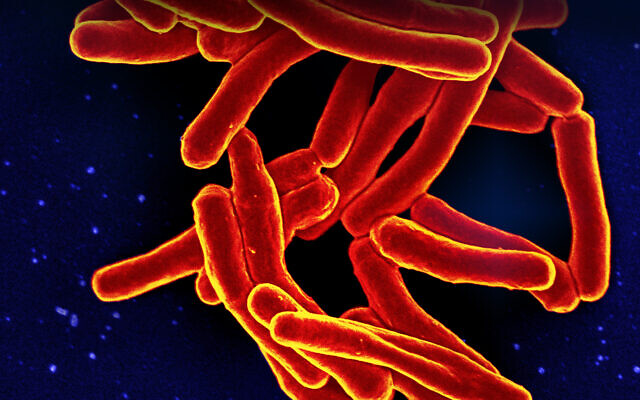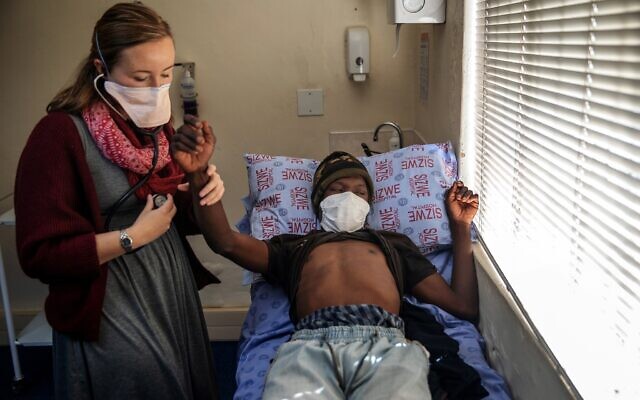Scientists at the University of Cambridge in England have discovered rare genetic mutations that cause gaucher disease prevent tuberculosis (TB) leading infectious killer Internationally (with the exception of the last few years during the Covid pandemic).
Gaucher, an autosomal recessive lysosomal disorder, is far more common in Jews than in the rest of the global population. according to a Study Published by the National Institutes of Health, it affects 1 in 500–1,000 individuals of Ashkenazi Jewish heritage, compared to 1 in 50,000–100,000 in the general population.
People with Gaucher lack an enzyme that breaks down lipids. These fatty substances start building up in certain organs like the spleen and liver. There is no cure for the disease, but it generally does not reduce average lifespan and its symptoms can be managed.
concluded that a person with Gaucher is less likely to develop tuberculosis Prof. Lalita Ramakrishnan and his group in Cambridge and published in the peer-reviewed Proceedings of the National Academy of Sciences of the United States of America (PNAS) earlier this year.
“We made this discovery while working with zebrafish in our lab. We are studying TB using zebrafish because their immune systems are similar to humans. It is also possible to manipulate their genes,” Ramakrishnan told The Times of India. told Israel.
Ramakrishnan is world-renowned for his tuberculosis research and is the sister of Venkataraman Ramakrishnan, who founded the Thomas A. Steitz and the Israeli scientist won the 2009 Nobel Prize in Chemistry. Jonathan is For his research on the ribosome.
For Ramakrishnan, this pursuit is not merely academic. He has personally seen people fall prey to TB, which is spread through the air and usually affects the lungs, but can make its way to other parts of the body. When Ramakrishnan was a child, his mother was ill with spinal tuberculosis thrice. Later, when she was a medical student working at a general hospital in Baroda, India, she had to examine each patient extensively behind a fluoroscope.

Scanning electron micrograph of Mycobacterium tuberculosis particles (colored red and yellow), the bacterium that causes TB. (NIAID via Wikimedia Commons)
“We performed our experiments using an organism called Mycobacterium marinum. It is a natural pathogen of cold-blooded animals including fish, in which it causes a TB-like disease. The pathology looks like TB in humans,” Ramakrishnan said.
Ramakrishnan further pointed out that while Mycobacterium marinum can cause systemic infections in cold-blooded animals, it can generally only go deeper into the skin in humans.
“Therefore, it can be worked out under standard laboratory conditions and does not require respiratory containment measures,” she said.
Ramakrishnan and his group were engineering genetic changes to enzymes in lysosomes within zebrafish cells. Lysosomes break down unwanted proteins and fats. If lysosomal dysfunction is present and enzyme production is reduced, unwanted material builds up in the cell.
The scientists found that the lysosomal disorders caused white blood cells called macrophages to become bloated and lethargic. Unable to move quickly, they are unable to do their job of engulfing and killing bacteria such as TB. This was bad news for the zebrafish.

Doctor Pauline Howell treats a TB patient named Nxumalo at the Sizwe Tropical Disease Hospital on August 5, 2019 in Johannesburg, South Africa. South Africa is one of the countries with the highest number of TB cases. (Michel Spatari/AFP)
“So then we decided to look at Gaucher. It is a common lysosomal disorder and the substrate accumulated in it is not a protein, but a lipid,” Ramakrishnan said.
“We were sure that animals would be more susceptible to the bacteria, because it was the same mechanism. We created Gaucher-mutant fish. We see that the macrophages have storage, their lysosomes are packed. They look exactly like human Gaucher macrophages.” and we can see that they don’t move around very much. And so we thought okay, let’s do an experiment to see if they are more susceptible to TB,” she said.
To everyone’s surprise, the Gaucher fish were resistant to TB-like bacteria after they were introduced.
,[My student] Jingwen Fan experiments again and again—and they are resistant! And the interesting thing is that it is much easier for us to find susceptible mutants than resistant mutants in our screens. And so it is the holy grail,” said Ramakrishnan.
The Gaucher fish were resistant to the bacteria because of what happens to substrates that accumulate in macrophages in Gaucher disease. One is glucosylceramide, which is a neutral lipid. It is converted to glucosylsphingosine, which is a charged lipid.
“It’s very similar to quaternary ammonium compounds. These are the things that are found in disinfectants and sterilizing liquids. And we realized that was probably the reason the bugs were dying. So we tested it, and we showed that in vitro, glucosylsphingosine killed insects. It also killed the human TB bug and other disease-causing bacteria. It simply inserted itself into the bacterial cell membrane and quickly disintegrated it, Ramakrishnan explained.

Glucosylsphingosine kills mycobacteria by destroying their cell membranes. (Victoria Hale and Jingwen Fan)
Once she and her group had conducted experiments using the N370S allele (the most common Gaucher-related genetic mutation in Ashkenazi Jews), they were ready to submit their paper for publication.
Humans can get TB traced back to 9,000 years ago In Atlit Yam, a city that is now under the Mediterranean Sea, off the coast of Israel. Ramakrishnan speculates that the Gaucher genetic mutation may have protected a significant portion of Jews, who historically were often forced to live in overcrowded conditions where TB thrived.
The discovery by Ramakrishnan’s group could lead to a new way of treating TB. This is incredibly important given the fact that half a million people become infected with drug resistant TB globally every year.
“Nobody wants Gaucher disease, but ironically, this nasty disease has helped us understand another ancient disease. It is possible that this research will help develop new treatments for TB, which kills 10.6 people a year.” sickens 1 million people and kills 1.5,” Ramakrishnan said.
